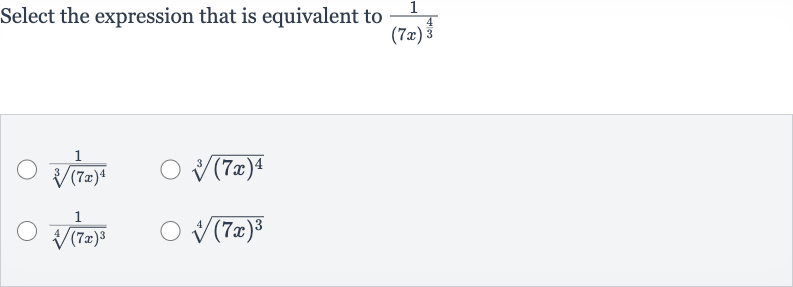AI tutor
Full solution
Q. Select the expression that is equivalent to
- Understand Given Expression: Understand the given expression.We are given the expression and we need to find an equivalent expression. The exponent can be interpreted as "the cube root of the quantity raised to the fourth power."
- Rewrite Using Radical Notation: Rewrite the given expression using radical notation.The expression can be rewritten using the radical notation as .
- Compare with Options: Compare the rewritten expression with the options.We have the expression from Step . Now we compare this with the given options:- is the same as our rewritten expression.- is not equivalent because it lacks the division by .- is not equivalent because the root and the exponent do not match the original expression.- is not equivalent for the same reason as the previous option.
- Select Correct Expression: Select the correct equivalent expression.The correct equivalent expression is because it matches the original expression when rewritten using radical notation.
More problems from Multiplication with rational exponents
QuestionGet tutor help
QuestionGet tutor help
QuestionGet tutor help
QuestionGet tutor help
QuestionGet tutor help

